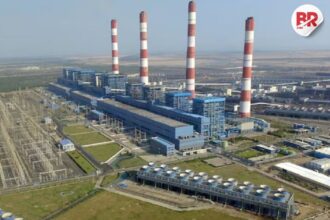
Sunil Mittal, former CII President and Chairman of Bharti Enterprises, laid out four key pillars for India’s growth at the CII Annual Business Summit in New Delhi on May 29.
His message was clear: India’s future depends on strong partnerships built on trust. Mittal pointed to the 5G rollout as a shining example of how government and industry can work together with urgency and clarity.

But what do these pillars mean for the average Indian? It means jobs, innovation, better trade, and policies that truly support business growth. It’s about unlocking the vast potential India holds, especially with its young workforce and growing industries.
Mittal started with the talent dividend. India has a huge pool of young, energetic people. Other countries face ageing populations and tighter immigration rules.
India’s advantage is its demographic dividend, but only if this talent becomes job-ready. The rise of Global Capability Centers (GCCs) shows this potential in action. If industry and government team up to sharpen skills, India could become the world’s go-to talent hub.
Next, he stressed investment in R&D. Innovation is not a luxury but a necessity. Mittal urged Indian companies to lead the way by investing more in research and development. This will inspire governments to support innovation even further. A strong public-private partnership in R&D can multiply India’s progress, turning bright ideas into real products and services.
Also Read 6.9% GDP Growth in Q4? Here’s Why India’s Economy Is Winning and Losing at the Same Time
The third pillar is a reset in India’s external trade. India’s exports have grown, but Mittal sees room to do much more.
Instead of just shipping raw materials, India should export high-value products. This means building a diversified and resilient trade framework.
Government initiatives in electronics manufacturing and semiconductors are steps forward. Over the next decade, these sectors could transform India’s trade landscape, making it less dependent on imports.
Sunil Mittal didn’t stop at trade. He highlighted India’s energy strategy, emphasizing a balance between renewable energy and hydrocarbons. The Northeast of India, rich in oil and gas, remains underdeveloped. Unlocking this resource can boost India’s energy security, making it stronger and more self-reliant.
Finally, Mittal pointed to the policy framework and collaboration. For growth to happen at scale, the government must keep creating business-friendly policies. These should be shaped in partnership with industry leaders. The successful 5G rollout, which happened because of clear collaboration, sets a great example. Replicating this model across sectors can accelerate India’s industrial rise.
In short, Mittal’s four pillars—talent, R&D, trade, and collaboration—are not just buzzwords. They form the backbone of India’s growth story. His call for trust and partnership is a reminder that no sector can thrive in isolation.
Also Read Why Retail Investors Are Suddenly Saying “No Thanks” to Hot New IPOs












